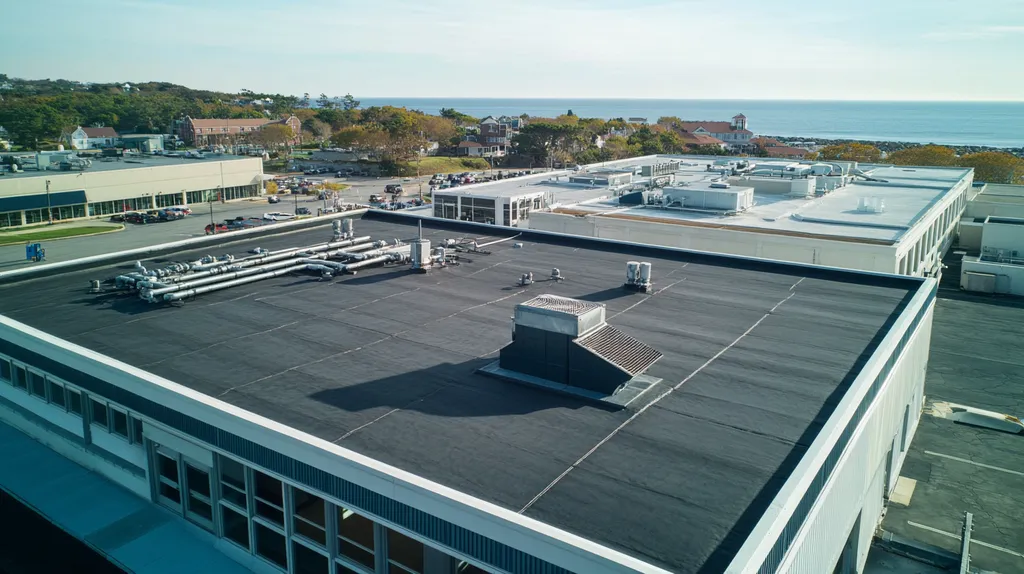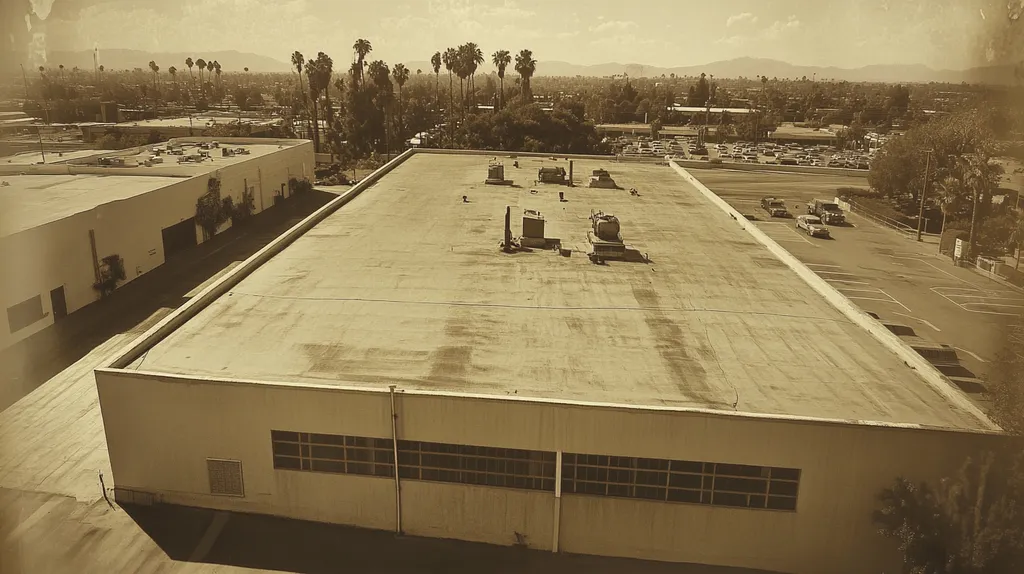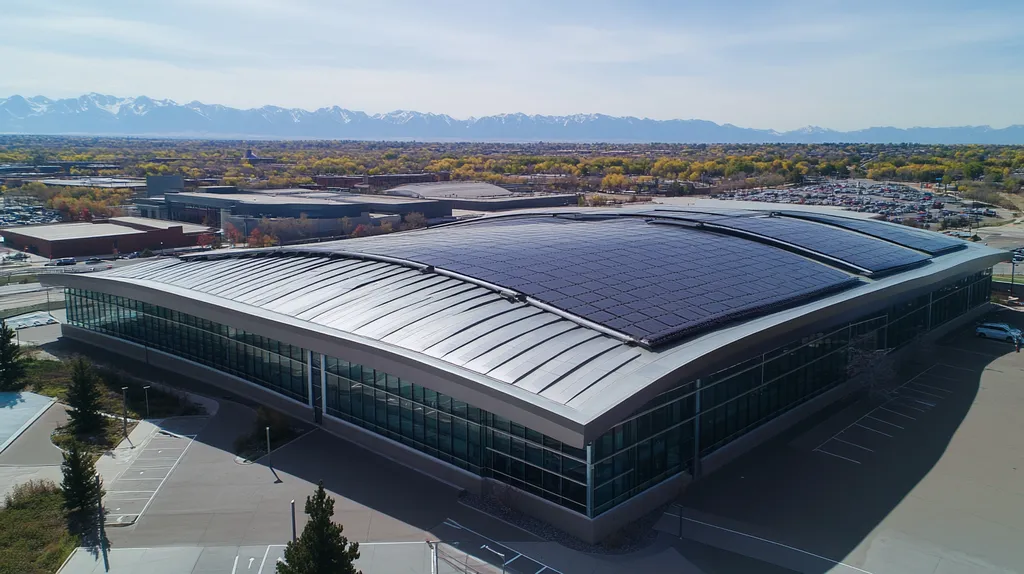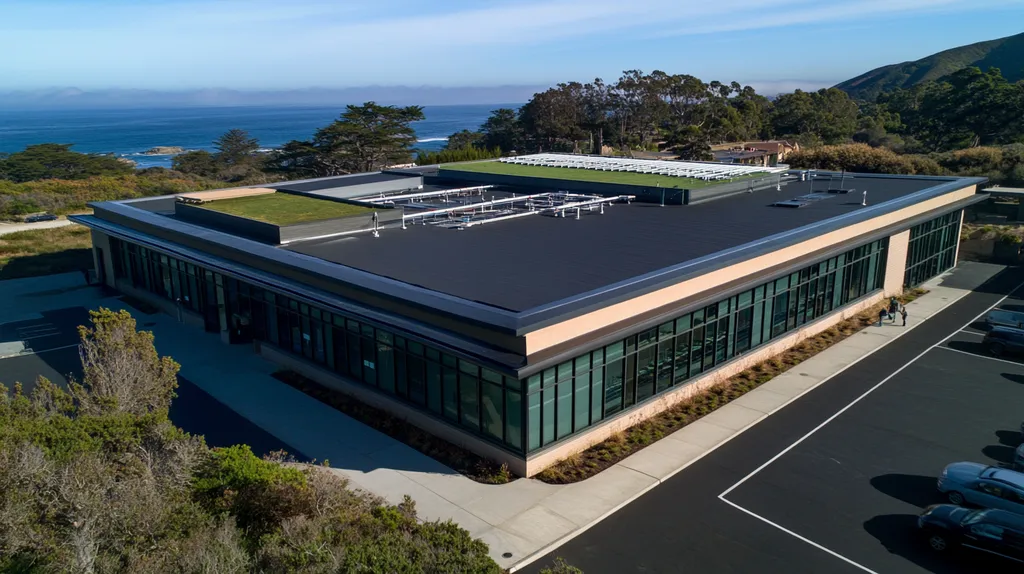In today’s rapidly evolving industrial landscape, proper documentation of roofing systems has never been more critical. Studies show that 85% of roof failures can be traced back to inadequate documentation practices, resulting in millions of dollars in preventable damage annually.
From digital inspection protocols to stringent compliance requirements, the documentation process is undergoing significant changes that facility managers cannot afford to ignore.
This comprehensive guide examines the fundamental shifts in roofing documentation, exploring everything from basic system definitions to advanced performance metrics that are reshaping how industrial roofs are documented, maintained, and evaluated.
SECTION 1: FUNDAMENTAL CONCEPTS
The documentation of an industrial roof is critical, yet many property owners underestimate its importance. Incomplete or outdated records can lead to steep maintenance costs and regulatory headaches. For example, roofs lacking proper documentation might not adhere to the latest safety standards, putting facilities at risk for costly liabilities. This section addresses the essential concepts that influence roofing documentation, including definitions of roofing systems, industry standards and codes, and the contributions of roof system manufacturers.
Roofing System Definitions
Grasping roofing system definitions is essential for effective documentation. Different roof types—including single-ply, built-up, and metal roofs—have their distinct construction methods and maintenance needs. Each type generates specific documentation requirements that directly influence inspection schedules and repair logs.
For instance, single-ply roofs often need more frequent inspections because they are particularly susceptible to UV damage. Conversely, built-up roofs may require a different strategy for maintenance documentation due to their layered structure. Understanding these distinctions is crucial for property owners to keep accurate records and meet industry standards.
Documentation should also capture vital information like warranties and product specifications. These elements protect property owners from premature material failures and help ensure adherence to safety regulations. Therefore, familiarity with roofing definitions leads to stronger documentation practices.
In summary, having clear definitions related to roofing systems empowers property owners to understand and fulfill their specific obligations. This knowledge is instrumental in supporting better maintenance strategies and effective risk management.
Industry Standards and Codes
Following industry standards and building codes is vital for effective roofing documentation. Organizations like the American National Standards Institute (ANSI) and the American Society for Testing and Materials (ASTM) set guidelines for material quality and installation. Compliance not only fosters safety but also affects warranty eligibility.
Moreover, local building codes often dictate certain documentation requirements for roofing projects. Ignoring these regulations can result in significant penalties, project delays, and additional costs. To minimize risks, property owners need to ensure their roofing documentation aligns with these codes.
For example, meticulously documenting roof insulation and energy performance can greatly influence compliance with energy codes, which are becoming increasingly rigorous. Staying updated on these evolving regulations helps property owners avoid pitfalls tied to outdated or inaccurate documentation.
Overall, a commitment to understanding and adhering to industry standards empowers property owners to create thorough documentation, safeguarding long-term roof performance.
Role of Roof System Manufacturers
Roof system manufacturers play a crucial role in the documentation landscape. They offer valuable resources, such as installation guidelines, maintenance schedules, and warranty details. Property owners should capitalize on these resources to achieve a comprehensive understanding of their roofing systems.
Additionally, manufacturers often provide documentation templates or software designed to help property owners log maintenance and repairs effectively. Utilizing these tools can enhance the documentation process and ensure compliance with both manufacturer stipulations and industry standards.
Engaging with manufacturers also creates avenues for ongoing support. For instance, regular inspections conducted by manufacturers can help identify minor issues before they develop into major problems, while also ensuring that documentation stays current. This proactive approach ultimately saves property owners time and money.
In essence, collaborating with roof system manufacturers is key. Their expertise and resources not only improve documentation practices but also assist property owners in maintaining compliance and achieving optimal performance standards.
SECTION 2: SYSTEM COMPONENTS
The effectiveness and longevity of an industrial roof hinge significantly on its system components, which are adapting to meet new challenges. These components are not just a matter of construction but also affect the compliance with increasingly strict regulations. For example, inadequate drainage solutions can result in severe water damage, while using outdated materials may violate contemporary sustainability standards. Understanding these pivotal changes is essential for property owners and facility managers.
Retrofit Drainage Systems
Retrofit drainage systems are rapidly becoming a necessity in modern roofing solutions. Many older roofs struggle to manage stormwater effectively, which can lead to serious structural issues. Upgrading to advanced drainage options can prevent water accumulation, thereby enhancing both the roof’s integrity and its lifespan.
Recent innovations, such as channel drainage and internal systems, are engineered to handle larger volumes of water efficiently. These solutions significantly reduce maintenance costs by decreasing the likelihood of clogs and overflow incidents.
Property owners must also be aware of evolving building codes that mandate specific drainage capacities. Non-compliance can lead to fines or legal trouble, making timely assessments and upgrades a priority.
Ultimately, investing in retrofit drainage solutions is not just reactive; it’s a proactive measure to maintain the health of an industrial roof. Improved drainage systems align with sustainable practices and can enhance operational efficiency, ultimately saving resources and costs.
Roof Deck and Sheathing Requirements
The roof deck and sheathing are foundational to a roof’s overall performance, and recent changes in building codes are stressing their importance. In many areas, there are now stricter requirements regarding thickness and material standards for insulation and moisture resistance.
These adjustments aim to boost energy efficiency and fire safety. Choosing the right sheathing materials, such as durable composite options, can make a noticeable difference compared to traditional wood-based products.
A compromised roof deck can lead to catastrophic structural failures. The increase in extreme weather events highlights the necessity for robust deck designs that withstand high winds and heavy rain. Engineers are advocating for stronger standards to address these challenges.
Failing to stay updated on deck and sheathing requirements can have severe consequences. Property owners risk not only financial losses but also safety issues. Investing in compliant materials ensures not only protection but also long-term viability of the roofing system.
Flashing and Waterproofing Materials
Flashing and waterproofing materials are crucial for preventing water intrusion, yet they are frequently underestimated. Recent advancements have led to new membrane technologies that deliver superior water resistance. Material options now range from modified bitumen to advanced thermoplastic solutions.
It’s vital for property managers to stay informed about the evolving standards relating to these materials. New guidelines are continually shaping installation methods and maintenance protocols. Following manufacturer recommendations can significantly extend the lifespan and ensure warranty coverage.
Moreover, innovations like liquid-applied membranes provide seamless protection even in complex areas such as roof penetrations. These advancements can lead to significant reductions in labor costs and installation time.
The risks of opting for subpar flashing and waterproofing materials are serious. Leaks can not only cause immediate damage but may also lead to long-term issues like mold growth. Therefore, being vigilant about the latest material developments is essential for effective roofing strategy and safeguarding investments.
SECTION 3: IMPLEMENTATION METHODS
The world of commercial and industrial roofing is changing fast, and it’s crucial for property owners to stay ahead of updated documentation practices. New building codes and sustainability standards are not just guidelines; they can directly affect project budgets and timelines. For instance, failing to comply with the latest energy efficiency mandates may lead to substantial fines and operational challenges. This section highlights essential implementation methods to help ensure compliance and effective documentation.
Design and Specification Guidelines
Appropriate design and specification guidelines are pivotal for effective documentation of industrial roofs. Adhering to the most recent building codes not only enhances safety but also extends a roof’s lifespan, minimizing the chances of leaks and structural failures. For example, using energy-efficient materials can lead to substantial cost savings over time.
When selecting roofing materials, property owners should always consult the latest industry standards. Specifications should include sustainability certifications that align with green building initiatives, as failing to document these elements can result in inefficient roofing solutions with soaring long-term operational costs.
It’s important for design teams to collaborate closely with roofing contractors to iron out any discrepancies in plans. This partnership can prevent costly misunderstandings and ensure that every detail is accurately captured in the final documentation, significantly reducing potential liabilities.
Ultimately, commitment to updated design and specification guidelines safeguards the roof’s integrity and enhances the overall protection of the facility it covers.
Installation Best Practices
Successful installation practices are critical and directly affect the quality of documentation for industrial roofs. The way a roof is installed not only impacts its current effectiveness but also determines its long-term performance. Keeping thorough records of installation techniques and materials used is vital for streamlined future maintenance and inspections.
All roofing contractors should be well-versed in the latest installation methodologies. Tools like digital checklists can be invaluable in ensuring compliance with current regulations at every step of the process, from initial setup to final touches. These written records serve as essential documentation to verify adherence to best practices.
Conducting regular inspections during installation can help catch potential issues before they snowball into major problems. Documenting these inspections creates a reliable audit trail, which is crucial for liability protection. If challenges do arise, comprehensive records can facilitate quick resolution and mitigate costs for property owners.
Emphasizing quality installation practices leads to robust documentation, directly enhancing roof performance while minimizing risks in the long run.
Alternative Testing Configurations
As roofing technology advances, alternative testing configurations are becoming increasingly important for ensuring industrial roofs’ durability. Traditional testing methods might not be sufficient in light of new materials and changing environmental demands. Innovative approaches such as infrared thermography and moisture scanning can uncover critical insights into a roof’s condition.
By implementing these advanced testing configurations, thorough inspections can identify hidden moisture issues before they evolve into major concerns. Proper documentation of these findings is essential for maintaining compliance with warranty standards and building codes, allowing property owners to schedule necessary maintenance proactively.
Sharing documentation of testing results with stakeholders fosters transparency and builds trust. Stakeholders are more likely to endorse roofing projects that showcase due diligence and proactive maintenance strategies. These insights are key to informed decision-making and long-term planning.
Overall, the integration of alternative testing configurations refines the documentation process, ensuring that each roof meets or exceeds both performance and compliance standards.
SECTION 4: MAINTENANCE REQUIREMENTS
Regular maintenance of an industrial roof is not merely a suggestion; it’s a necessity for safeguarding the entire structure. Alarmingly, 75% of roofs fail prematurely due to insufficient upkeep. A proactive approach to roof maintenance can help avoid expensive repairs, extend the lifespan of the roof, and reduce operational interruptions. This section will illuminate the key elements of effective maintenance, focusing on the importance of systematic inspections, timely repairs, and strategic preventative measures.
Regular Inspection Protocols
A consistent inspection protocol is crucial for spotting potential issues before they escalate into major repairs. Ideally, inspections should occur at least twice a year and immediately after severe weather events. During these inspections, roofing professionals need to assess the condition of the membrane, flashing, drainage systems, and seams for any signs of wear or damage.
Property managers must document all findings meticulously. This detailed record-keeping aids in identifying trends and predicting future maintenance needs. Skipping this vital step can lead to overlooked repairs, allowing minor issues to worsen unnecessarily.
Advancements in technology, like drone inspections, can also significantly enhance the inspection process. These tools provide detailed aerial views of large industrial roofs, reducing safety risks and capturing data that traditional methods may miss.
Being informed about roof performance metrics through regular inspections empowers property managers to take proactive measures, preserving both the asset’s value and the safety of building occupants.
Repair and Replacement Procedures
Establishing clear procedures for repairs is key for a responsive maintenance strategy. Quick action is essential when leaks or other damage are found, as delays can worsen the situation and inflate repair costs.
Property owners should collaborate closely with roofing contractors to develop a prioritized repair list that is based on the severity of issues and potential impacts on operations. This list should outline timelines for completion and expected costs, ensuring transparent communication that fosters timely repairs.
In cases where a roofing system is deemed irreparable, a documented analysis must guide the decision for replacement. Factors to consider include warranty status, longevity of roofing materials, and historical repair records.
Lastly, regular evaluations of the repair procedures streamline future maintenance processes, enabling quick response to urgent issues.
Preventative Maintenance Strategies
Implementing effective preventative maintenance strategies is essential for prolonging the life of industrial roofs. By adopting a proactive maintenance schedule, facility managers can identify potential issues before they escalate. Regularly cleaning roof surfaces is vital to prevent debris accumulation that can lead to pooling water and leaks.
It is equally crucial to establish a routine for clearing gutters and drains. Clogged drainage can cause significant water damage, making this task a critical component of any maintenance schedule.
Applying regular coatings or sealants can further protect roofing materials from the elements, significantly reducing the need for costly repairs over time.
Training employees on roof maintenance protocols can enhance overall efficiency. Well-informed staff can spot early signs of wear, alerting management before small issues snowball into bigger problems.
SECTION 5: PERFORMANCE METRICS
As the complexity of industrial roofing grows, having accurate performance metrics becomes more critical than ever. Poorly calculated metrics can lead to unwanted water damage, exorbitant repair costs, and increased liability risks. For instance, a roof with insufficient flow capacity might allow water to pool, speeding up the deterioration of roofing materials. Facility managers and property owners must grasp the importance of flow capacity calculations, water column testing, and air pressure testing for effective roof management.
Flow Capacity Calculations
Flow capacity calculations are vital for understanding how easily water is directed off an industrial roof. Accurate flow capacity helps prevent pooling—a common issue that can lead to leaks and costly repairs. Ideally, roofs should handle rainfall rates of at least 1 inch per hour, yet many facilities fall well below this standard.
To calculate flow capacity, roofing professionals consider drainage design, roof slope, and gutter size. Many facilities may not meet local building codes, increasing their risk for water-related damage. Thus, regular reviews of flow capacity calculations are critical to compliance and performance.
A recent study highlighted that roofs designed with proper flow capacity can reduce leakage incidents by up to 75%. By actively monitoring and adjusting these metrics, facility managers can significantly enhance the longevity of their roofing systems.
Incorporating enhanced flow capacity calculations into regular documentation allows for proactive maintenance strategies. This shift not only mitigates risks but also extends the roof’s lifespan while maximizing operational efficiency.
Water Column Testing Standards
Water column testing is crucial for verifying that roofing systems can withstand different moisture levels. These tests measure how well a roof holds up against hydrostatic pressure. Without these assessments, facility managers cannot accurately document a roof’s waterproofing capabilities.
For instance, a roof that is rated for low water column resistance might fail during heavy rainfall, leading to dangerous leaks. Generally, a water column threshold of 6 inches is necessary for industrial applications; anything below that requires immediate evaluation.
Documenting water column testing results plays an important role in compliance reports and insurance evaluations. Additionally, these documents can help secure warranties from roofing manufacturers, offering extra security for property owners.
By following standardized testing procedures, facility managers ensure that roofs not only meet operational needs but also proactively guard against unforeseen water damage.
Air Pressure Testing Methods
Air pressure testing examines the integrity of roofing systems by evaluating their resistance to air loss. As energy efficiency becomes increasingly significant, these tests are essential for industrial roofs. By identifying air leaks, facility managers can pinpoint vulnerabilities that undermine insulation and raise energy costs.
If a roofing system allows air leakage, it can lead to higher heating and cooling demands, which subsequently increase operational expenses. Regulations often require air pressure testing to access energy efficiency incentives, making it more crucial than ever to stay informed about these practices.
Good results from air pressure tests not only bolster compliance with efficiency standards but also enhance occupant comfort and operational efficiency. A well-sealed roof can cut energy costs by up to 30%, providing a strong motivation for proactive testing.
Documenting air pressure test outcomes serves multiple purposes, ensuring alignment with industry standards and guiding future upgrades. This commitment to rigorous testing represents a significant advancement in maintaining the integrity and efficiency of industrial roofing systems.
SECTION 5: PERFORMANCE METRICS
As the complexities of industrial roofing continue to grow, having accurate performance metrics is more crucial than ever. Inadequate calculations can lead to serious consequences, including water damage, expensive repairs, and even potential liability issues. For instance, a roof with insufficient flow capacity might allow water to stagnate, accelerating the deterioration of the roofing material. Therefore, understanding flow capacity, water column testing, and air pressure testing methods is essential for facility managers and property owners alike.
Flow Capacity Calculations
Flow capacity calculations are key to ensuring efficient water drainage on industrial roofs. Accurate calculations help avert pooling, a common issue that often results in leaks and costly repairs. Ideally, roofs should manage rainfall rates of at least 1 inch per hour, but numerous facilities fall short of this benchmark.
To compute flow capacity, roofing professionals evaluate various factors such as drainage design, roof slope, and gutter size. In many situations, facilities may not meet local building codes, raising the risk of water-related damage. Facility managers should routinely review these calculations to maintain compliance and performance standards.
A recent study revealed that roofs designed with proper flow capacity can cut leakage incidents by up to 75%. Regular reassessments and adjustments of these metrics can significantly enhance the longevity of the roofing system.
By integrating enhanced flow capacity metrics into existing documentation practices, facility managers can adopt proactive maintenance strategies. This shift not only lowers risks but also extends the lifespan of the roof while maximizing operational efficiency.
Water Column Testing Standards
Water column testing is essential for verifying that roofing systems can perform well under various moisture levels. These tests assess how well a roof assembly withstands hydrostatic pressure. Without conducting these assessments, facility managers cannot accurately document their roof’s waterproofing capabilities.
For example, a roof rated for low water column resistance may fail during heavy rainfall, leading to unacceptable leak rates. Normally, a water column threshold of 6 inches is necessary for industrial applications; anything lower should trigger an immediate evaluation.
Documenting the results of water column testing is crucial for compliance reports and insurance evaluations. Additionally, having these results can help secure warranties from roofing manufacturers, providing extra layers of protection for property owners.
By following standardized testing procedures, facility managers ensure that roofing systems not only meet operational needs but also effectively defend against unforeseen water damage.
Air Pressure Testing Methods
Air pressure testing methods assess the integrity of roofing systems by evaluating their resistance to air loss. As energy efficiency grows in importance, these tests are increasingly critical for industrial roofs. By pinpointing areas of air leakage, facility managers can identify vulnerabilities that could undermine insulation and drive up energy costs.
If a roofing system allows air leakage, it can lead to increased heating and cooling demands, which subsequently inflate operational expenses. Regulations frequently require air pressure testing to qualify for energy efficiency incentives, making it crucial to stay updated on these practices.
Successful outcomes from air pressure tests not only enhance compliance with efficiency standards but also improve occupant comfort and operational effectiveness. A well-sealed roof has the potential to lower energy costs by as much as 30%, providing a strong incentive for regular testing.
Thorough documentation of air pressure testing results serves multiple purposes, ensuring alignment with industry standards and serving as a guide for future upgrades. This rigorous testing approach represents a significant advancement in maintaining the integrity and efficiency of industrial roofing systems.
The Bottom Line
With 85% of roof failures linked to poor documentation practices, the stakes for proper industrial roof documentation have never been higher.
The landscape of roofing documentation continues to evolve rapidly, driven by technological advances, stricter regulations, and increased focus on sustainability.
From digital inspection protocols to advanced testing methods, facility managers must adapt to these transformative changes or risk costly consequences.
Property owners who embrace comprehensive documentation strategies – including detailed maintenance records, performance metrics, and compliance documentation – position themselves to avoid millions in preventable damage while extending their roofs’ lifespans by up to 25%.
The future of industrial roofing lies in meticulous documentation, proactive maintenance, and adherence to evolving industry standards.
FREQUENTLY ASKED QUESTIONS
Q. Why is documentation important for an industrial roof?
A. Documentation is essential as it helps maintain compliance with safety standards and regulations. Without it, property owners risk legal liabilities and face unexpected maintenance costs due to inadequate records, leading to financial burdens.
Q. What is a retrofit drainage system for commercial roofs?
A. A retrofit drainage system is designed to improve stormwater management on older roofs. These modern solutions reduce maintenance needs and prevent water damage by efficiently directing water away, extending the lifespan of the roof.
Q. How do design guidelines affect industrial roof documentation?
A. Design guidelines ensure that both materials and construction methods meet current building codes. Proper documentation of these guidelines supports compliance, enhances safety, and prevents costly repairs resulting from design-related issues.
Q. What maintenance requirements should be documented for industrial roofs?
A. Regular inspections, prompt repairs, and preventative measures should all be documented. This helps in identifying issues early, ensuring compliance with warranty requirements, and maintaining the roof’s long-term integrity, avoiding costly repairs.
Q. What are critical performance metrics for an industrial roof?
A. Key performance metrics include flow capacity, water column testing, and air pressure testing. These metrics help ascertain the roof’s ability to manage moisture and air leakage, thereby ensuring effective performance and longevity.
Q. How does air pressure testing benefit commercial roofs?
A. Air pressure testing reveals leaks that can lead to higher energy costs. By identifying these vulnerabilities, facility managers can improve insulation efficiency, enhance occupant comfort, and lower operational expenses significantly.
Q. What additional resources can assist with industrial roof documentation?
A. Engage with roof system manufacturers for templates, maintenance logs, and guidelines. These resources not only help streamline documentation but also ensure adherence to safety regulations and improve long-term roof management strategies.











